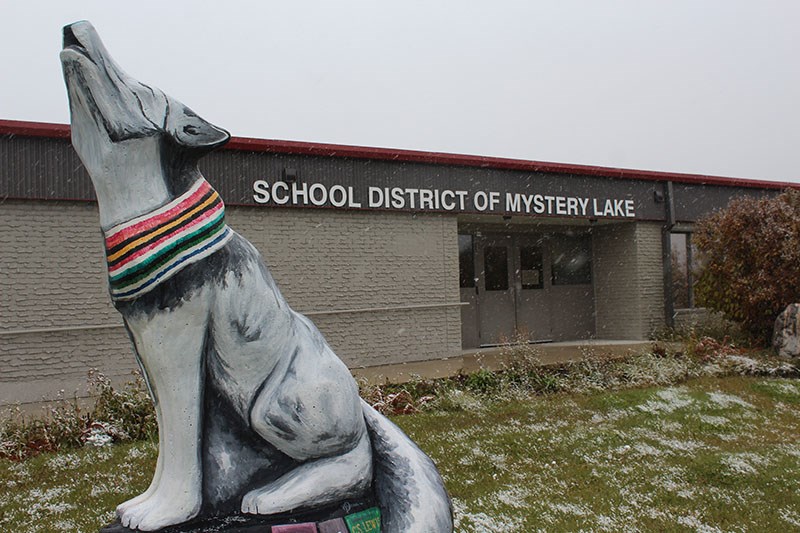While the novel coronavirus pandemic and the associated precautions, public health orders and state of emergency declared by the province are having far-reaching effects on organizations like municipal governments, first responders, health-care providers and businesses of all types and sizes, much of the School District of Mystery Lake’s (SDML) first mostly virtual meeting of the pandemic era on April 21 was devoted to discussion of its effect on the district and its students.
Some of the discussion centred around how this will affect the graduation ceremonies of current Grade 12 students and what to do about money raised by soon-to-be graduates for an educational trip to Europe that they will not get the chance to go on. But as serious as these issues are to the people affected by them, a much more fundamental question is how the indefinite suspension of classroom learning, which could last the rest of this school year, is affecting students from Thompson and outlying areas who don’t have the same tools to participate in distance learning activities as their peers.
Nearly 500 students in the division, which has about 3,000 students overall, do not have access to the internet at home, the school board heard. And more than 450 of the district’s students have not been contacted by or been in contact with their schools or teachers since the last day of in-class learning on March 20. While the precise circumstances of these students are unknown, it seems fair to assume that the reason some of them do not have internet access at home is because they can’t afford it, meaning that the shift away from classroom learning for the time being could have a detrimental effect on lower-income students, some of whom who already faced significant barriers to getting the most out of their education before COVID-19 drastically shifted the school landscape in Manitoba, across Canada and around the world.
Manitoba-wide, 79.9 per cent of students who started Grade 9 in September 2014 had graduated by June 2018. Non-Indigenous females had the highest five-year graduation rate, in excess of 90 per cent, while more than 85 per cent of non-Indigenous males completed high school in the same timeframe. For Indigenous females, the on-time graduation rate at the end of the 2017-18 school year was 51.2 per cent and for male Indigenous students it was about 46 per cent.
In the north, however, overall graduation rates are lower than the provincial average, with about 64 per cent of students in the Flin Flon School Division graduating who started high school in September 2014 finishing by June 2018 and about 51 per cent in the Kelsey School Division in The Pas. The four-year SDML graduation rate in June 2018 was 47.2 per cent and in the Frontier School Division it was 32.6 per cent. The latter two were the only divisions in the province where fewer than half of students who started Grade 9 in September 2014 graduated on time.
Though the COVID-19 pandemic remains dynamic and its full effects won’t be known until well after the fact, Manitoba’s economy is bound to take a severe blow, which could make it difficult for those with only a high-school diploma to find jobs after graduation. For those with less than a Grade 12 education, it will likely be even harder. It is likely never possible to achieve equity of outcomes for all students, because there are many factors that can influence or interrupt a given student’s education, possibly causing them to drop out entirely. The goal, however, should be at least to offer equity of opportunity. The coronavirus didn’t cause the factors associated with worse educational outcomes for lower-income students. But for students in the SDML who don’t have access to internet at home to use while in-class learning is suspended, it certainly has the potential to heighten their effects. And as long as educational outcomes in Northern Manitoba are worse than those in the south, or across the province as a whole, all the looking north the provincial government does in an attempt to create a stronger regional economy is not going to benefit the region’s residents as much as it should.



